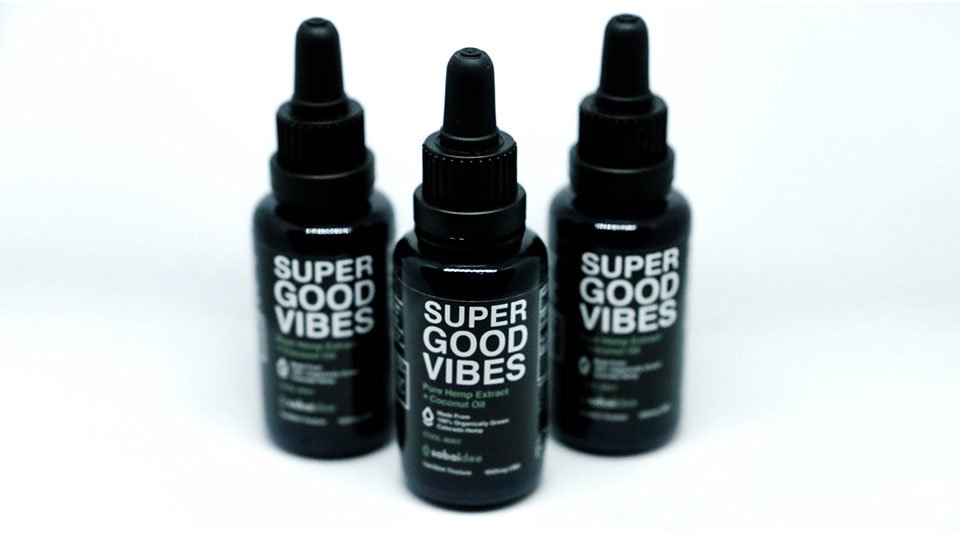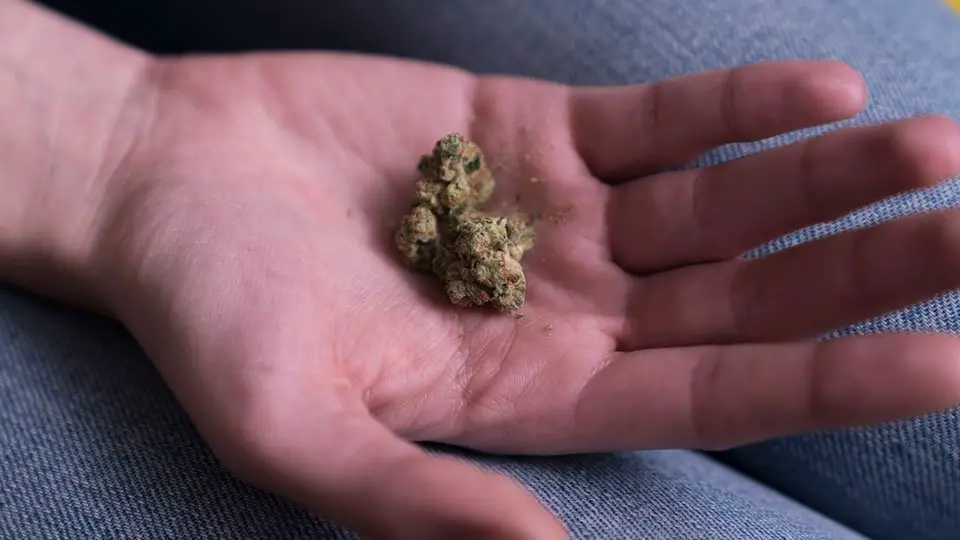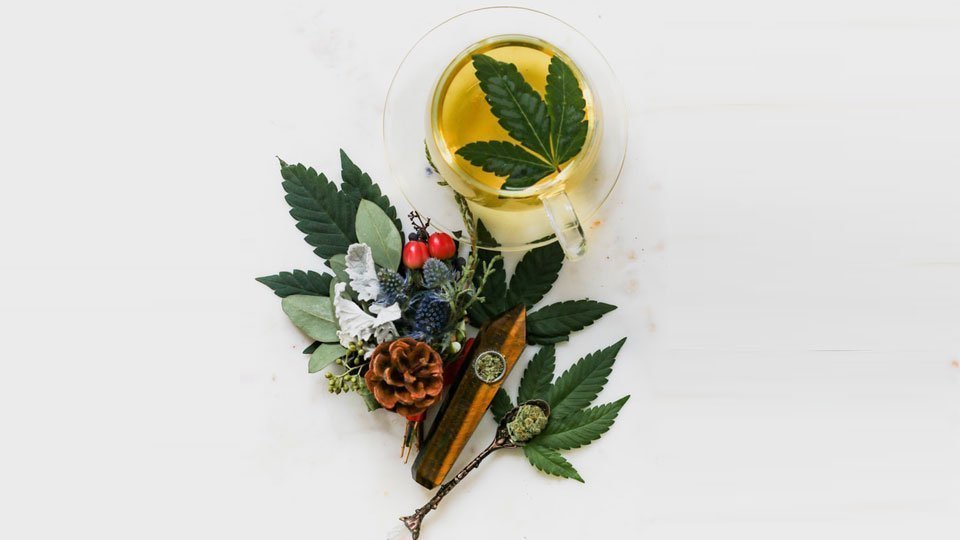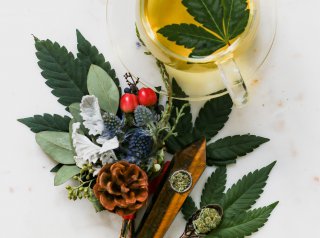Based on what the name suggests, liquid marijuana is just marijuana in the form of liquid. It is often called as “liquid THC” wherein THC stands for tetrahydrocannabinol and it is the compound found in cannabis that gives the smoker the psychoactive effects. The liquid form of marijuana is usually bought in cartridges and can also be done by extracting a marijuana plant but this method can be more dangerous. The liquid form will then be loaded in a vaporizer pen and it’s ready to be used by the smoker.
Liquid marijuana or cannabis tinctures have been around for a long time. In fact, it was once the primary form of ingesting medicine. With tinctures, one could dose properly and avoid any of the irritating smoke that comes with lighting up a joint. It gradually lost its popularity, however, due to the subsequent marijuana ban in 1937.
Today, it is quickly gaining its momentum back as more and more people experiment with cannabis. Apart from the dosing, tinctures, as they are better known, offered a new novelty to users. It could be added to food, drinks, and even candy depending on what one feels like. Not to mention, it acts quicker and stronger.
As it continues to make its comeback, there are some things that users should know about liquid marijuana.
Page Content
Understanding Liquid Marijuana
Liquid marijuana is exactly what it is – cannabis in liquid form. It is extracted from the marijuana plant into a tincture which can then be ingested or applied topically. It can be THC or CBD based, depending on the maker or seller as well as purpose, and are often sold in bottles and sprays.
The Basics of Tinctures
A tincture is basically an herbal concentrate that is extracted using a solvent. Parts of the plant are soaked in the solution to extract active components such as resin for weeks. Afterward, the mixture is strained to remove the herbs to leave behind the concentrated liquid.

The most common solvent used when creating tincture is alcohol. Not isopropyl but ethanol which is present in alcoholic drinks such as vodka or brandy. It effectively breaks down the basic and acidic components of the plant matter. However, vinegar and glycerin or glycerol could be used too especially if it is meant to be ingested. The herb matter, on the other hand, could be any part of the plant including fresh or dried leaves, flowers, and roots.
Mixed together, the plant parts along with its chemicals dissolve into the alcohol. They remained suspended in the alcohol solution for the next few weeks until it is strained.
Effects
Consuming marijuana in its liquid form is no different from smoking it. The base dictates the type of effect the liquid marijuana induces.
THC-based liquids induce a psychoactive effect which leaves users feeling euphoric and relaxed. CBD liquids, on the other hand, do the opposite. Instead of a mind-expanding head high, the lack of psychotropic compounds provides a calmer buzz with immense medicinal capabilities such as pain relief or anxiety reduction.

Keep in mind though that liquids are concentrated and usually do not come with other active ingredients. Thus, smoking a THC liquid would be like smoking a potent THC bud. The same goes for a CBD liquid, in which it mimics a high CBD strain.
Because of the rather large amount of time it takes to feel the effects of liquid THC, it’s important to stick with one dosage amount until you figure out how everything works. We recommend starting with one dropper per 12 hours.
Benefits
Cannabis tinctures or liquid marijuana comes with double the benefits of smoking a joint. However, its advantages stretch far beyond its psychoactive or medicinal effects.

- Potent. Liquid marijuana has a higher concentration of THC or CBD compared to flowers. As such, its effects are comparably more potent than that of a regular joint.
- Quick-acting. The larger percentage of present cannabinoids in liquid marijuana means that more will enter the bloodstream and taken into the brain, along with different parts of the body, once consumed. As such, the effects are much more pronounced.
- Cost-effective. Dried buds contain a lot of non-cannabinoids. In fact, 88% of the smoke inhaled does not contain any of the active ingredients. Moreover, it delivers the a longer and more powerful experience with lesser hits. As such, users need not work about the stash.
- Discreet application. Consuming liquid marijuana is far less noticeable than hitting off a blunt and producing smoke. This could come in handy for people in areas that are largely misinformed about the effects of cannabis.
- Healthier. Heating cannabis activates cannabinoid compounds such as THC and CBD. Thus, in order to enjoy weed, users must light up a blunt. Combusting the buds, however, creates by-products like tar and carcinogens which are harmful chemicals that adversely affect one’s health.
Ways To Use
Liquid marijuana gives users more options with the way marijuana is consumed. The tincture can be consumed by itself directly, but could also be added to food or drinks. Some have even found success in applying it topically like a liniment oil or a watery ointment.
- Sublingual. This method of administrating tinctures requires users to take a few drops under the tongue where the sublingual artery is located. The active ingredients are rapidly absorbed by the arterial blood supply which releases it directly into the bloodstream, without processing it in the liver or gut. Effects start within 15 to 30 minutes and usually peak around the 90-minute mark. Remember to let the drops absorb for 30 seconds.
- Ingestion. Swallowing the tincture directly is another option. Since it is safe for consumption, it can be added to food. The effects tend to be stronger compared to the one induced by sublingual application. If any, the only downside is the delayed onset which could take up to 2 hours.
- Topical. Tinctures were extracted from the marijuana plant using alcohol. As such, it tends act like an astringent. It is best used for acne, skin irritation, or deep injuries below the surface of the skin that would benefit from the drying effect but not for wounds or mucous membranes. This method is the least popular among the three, and is often reserved for infused cannabis oils or whole plant cannabis oil.
Tincture Vs. E-Juice
Lately, there have been people who mistake tinctures for the electronic juices or liquids made for vaporizers. This is a major mistake. For one, there is a major difference in formula.
Marijuana tinctures are made from a base oil (usually sesame oil), flavoring, and an active cannabinoid. They can be added to food but also consumed directly. However, they cannot be vaped since base oils are not meant to be burned. Otherwise, it would obscure the flavors with a horrible taste.
Cannabis e-juices, on the other hand, are made out of vegetable glycerin, propylene glycol, flavoring and either THC or CBD. These ingredients are non-toxic and will have no negative side effect on users if ingested. However, they have been specially formulated vaping and it would not be a good idea to consume them.
In summary, e-juice can be ingested like a tincture but tinctures cannot be vaped.
How To Make Liquid Marijuana?
It is relatively easy to make liquid marijuana. One only needs to seep the cannabis buds in a solvent then either leave it be for a few months or use a home appliance to hasten the process. However, there is one more process to go through before producing a tincture.

Decarboxylation
Cannabis flowers are a basic ingredient required for making a tincture. Before soaking it in alcohol, however, it would be best to decarboxylate them first. Raw buds contain the cannabinoids THCA and CBDA instead of THC and CBD.
Decarboxylation is the process by which the acid precursor is removed thereby activating the cannabinoid. It usually occurs when the buds come in contact with heat. Through drying, combusting, or heating, THCA transforms into THC while CBDA becomes general CBD.
The best way to decarboxylate cannabis is to put it in the oven. First, preheat the oven to 230°F or 110°C. While it is heating, start preparing the buds by grinding it into smaller pieces. Place it in an oven-safe pan or baking sheet then cover it with aluminum foil so it does not burn once inside the oven. Leave it at that temperature for 110 minutes.
Once the decarboxylated buds are prepared, it is now ready for use to create tinctures.
Freeze Method
This method preserves the cannabinoids by steeping the decarboxylated buds in a solvent such as alcohol for the next 48 hours. It is routinely shaken every 2 to 3 hours for the next two days. At the end of the freezing period, the mixture is strained to leave only the tincture.
Materials:
- Freezer
- Strainer or cheese cloth
- Mason jar or glass jar with lid
- Zip-top plastic bag
- Flavoring (optional)
- Decarboxylated cannabis buds, chopped or ground
- Solvent solution (high proof ethanol or glycerin)
Directions:
- Carefully put the grounded, decarboxylated buds inside a zip-top plastic bag. Ensure that it is sealed tight.
- Place the zip-top bag filled with plant matter inside the freezer along with the solvent solution. Let it cool for a few hours.
- Routinely feel the bag to check if the buds have become frozen stiff.
- Once it has hardened, take it out of the freezer along with the solvent solution. Feel free to add the flavoring during this time.
- Mix 1 ounce of chopped cannabis with 32 ounces or 1 quart of either alcohol or glycerin into a glass jar.
- Secure the contents by sealing the jar with its lid then shake it for 5 minutes straight.
- Place the jar inside the freezer.
- Every 2 to 3 hours for the next 2 days, take the jar out and give it a shake.
- After 48 hours have passed, strain the mixture thoroughly to separate the solid plant matter from the resulting tincture.
- Pour the liquid marijuana into an opaque bottle and store it in a cool, dark place. Avoid exposing it to light for long periods of time.
Heat Method
The heat method is the quickest way to create a tincture. Instead of 2 days to 3 months, cannabis enthusiasts only need to wait for 30 to 60 minutes. It reduces the overall production time by not letting the mixture soak for a long time.
Of course, the green dragon method, as it is otherwise called, comes with its own set of risks. The likelihood of the solvent solution catching fire is high. Not only that, exposing the solution to high heat could potentially alter its medical effects.

The benefits, however, greatly outweigh the possibility of messing up. This method produces a potent tincture that is perfect for inducing a powerful buzz. It could even be added to edible recipes and it would double the strength of the tea, gummy, candy, and lollipop.
It would be best to start small though. This way, one would not end up wasting a whole harvest.
Materials:
- Oven
- Strainer or cheesecloth
- Flavoring (optional)
- Quick read thermometer
- Medium-sized sauce pan
- Mason jar or glass jar with lid
- Decarboxylated cannabis buds, chopped or ground
- Solvent solution (high proof ethanol or glycerin)
Directions:
- Mix the solvent solution and chopped decarboxylated buds in a mason jar.
- Pour about an inch of water in a medium-sized sauce pan and heat it to a low simmer.
- Dip the thermometer into the mixture inside the glass jar.
- Give the mason jar a water bath by placing it in the simmering water.
- Monitor the mixture and the temperature. Bring it to 170℉ or 77°C, or just below the boiling point of your solvent solution.
- Let it sit in the simmering water for 20 minutes, making sure that the temperature is always a few degrees below the boiling point.
- Once 20 minutes have passed, remove the mason jar from the water bath and let it cool for a few minutes.
- Strain the plant matter from the liquid using a strainer such as a cheesecloth.
- Pour the liquid into an opaque dropper bottle to reduce its exposure to light.
- Store the tincture in a cool, dry place.
Room Temperature Method
This method is the easiest among the three ways to make liquid marijuana. It does not require any refrigerators, freezers, or stoves. If any, the only downside is that it takes quite a long time; stretching for months if needed. The good thing, however, is that it pulls out every bit of CBD or THC out of the cannabis plant matter.
Materials:
- Strainer or cheesecloth
- Flavoring (optional)
- Brown bag or paper bag
- Mason jar or glass jar with lid
- Decarboxylated cannabis buds, chopped or ground
- Solvent solution (high proof ethanol or glycerin)
Directions:
- Place the decarboxylated cannabis buds into a mason jar.
- Pour the solvent solution into the same glass jar.
- Once both the buds and solvent have been mixed, cover the jar with its lid. Ensure that it is shut tight.
- Shake the jar well to mix the solution properly.
- After giving the mixture a thorough shake, put the jar inside a brown bag or paper bag then place it inside a cabinet, away from a sunlight.
- Ensure that the location stays at room temperature. It can get warm but never hot.
- Let the mason jar sit for 1 to 3 months. Generally, the longer it stays inside the cabinet, the better. In this way, the solution can steep much longer too.
- Throughout the steeping period, shake the tincture every few days.
- Once the waiting time is over, separate the plant matter and liquid using a mesh strainer or cheesecloth.
- Pour the liquid into an opaque bottle and store it away from the sun.
Straightforward And Effective
Liquid marijuana is among the many methods of administration available to cannabis users. Yet, if there are two adjectives that would best describe tinctures, it would be straightforward and effective. One could just swallow it directly and it would get the job done within minutes – delivering an onslaught of effects that are stronger compared to the traditional way of administrating cannabis. No doubt, it has become a staple for many users who have rediscovered it.






Liquid marijuana takes away the smoking feels when burning the weed.